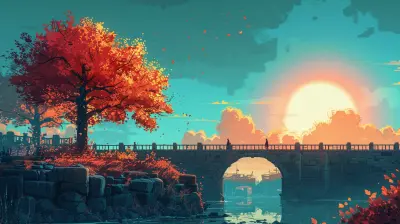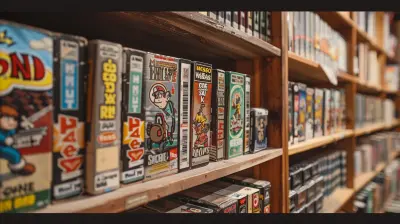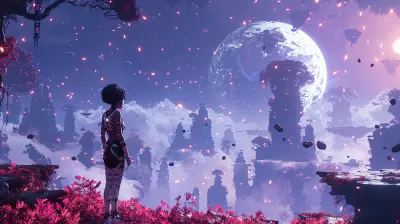The Future of Procedural Generation and Its Impact on Graphics
11 June 2025
Imagine a world where game worlds literally build themselves as you play. Sounds pretty futuristic, right? Well, we’re already on our way there. Procedural generation, once a buzzword thrown around by indie devs, is now shaping up to be one of the most powerful tools in modern game development — especially when it comes to graphics.
In this article, we're diving deep into what procedural generation really is, how it’s evolved, and more importantly, where it's heading. If you've ever wondered how massive open worlds, realistic textures, and dynamic environments come to life, you're in for a treat. Grab your gear, pixel adventurer — let’s talk about the future of procedural generation and how it’s going to flip graphics on their head.
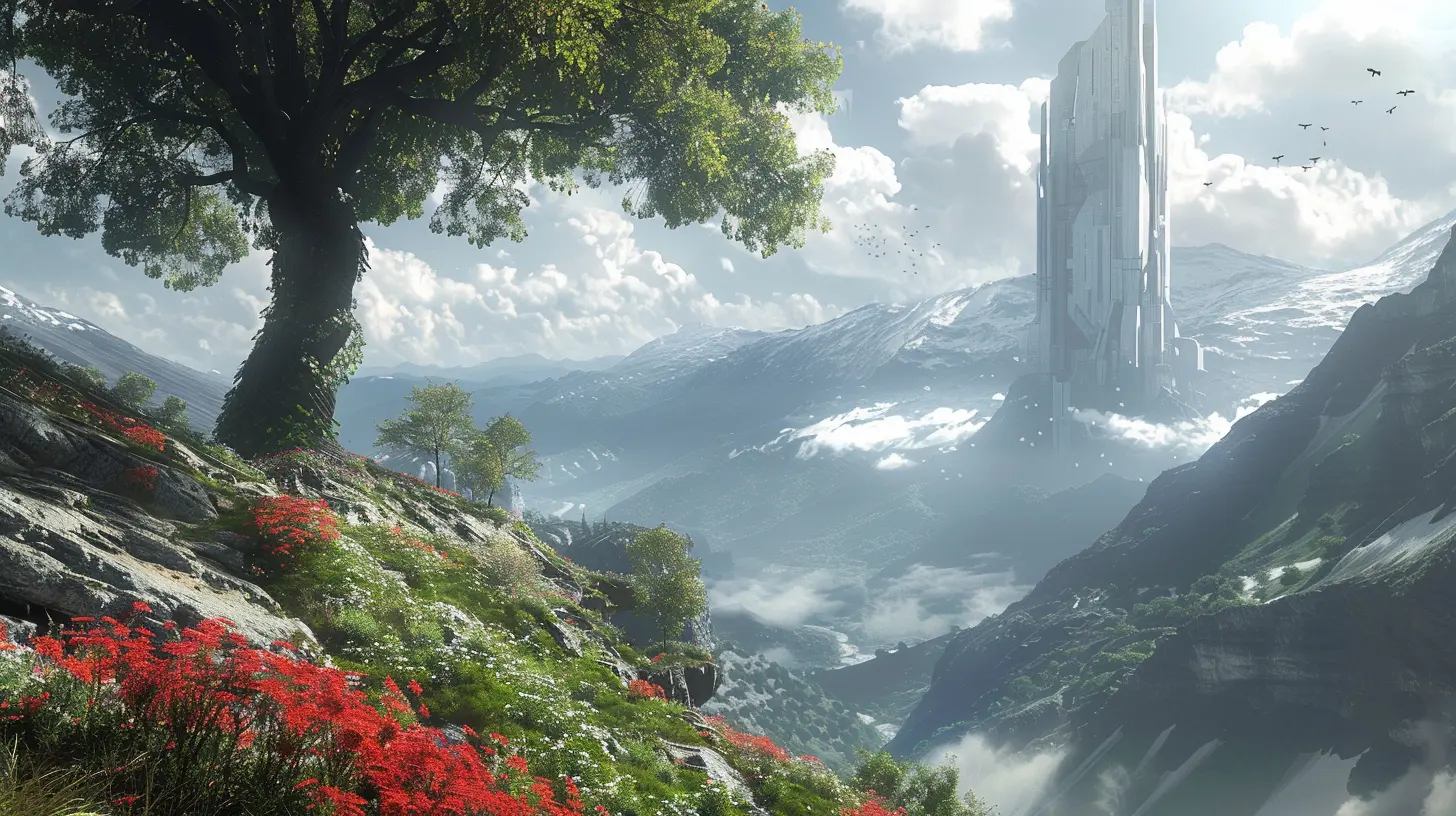
What Is Procedural Generation, Really?
Okay, let’s break it down nice and easy.Procedural generation is a fancy way of saying "let the algorithm do the heavy lifting." Instead of a designer hand-crafting every little rock, tree, or texture, procedural generation uses algorithms to generate content automatically. We're talking landscapes, terrain, cities, dungeons, textures — even entire galaxies.
Think of it like giving a robot a set of LEGO rules, and telling it to build a castle. Every time you hit "build," it comes out slightly different, but still a castle.
One of the most well-known examples? Yeah, you guessed it — No Man’s Sky. That game generated an entire universe with over 18 quintillion planets using procedural generation. That’s not a typo — quintillion. You’d need multiple lifetimes to explore even a fraction of them.
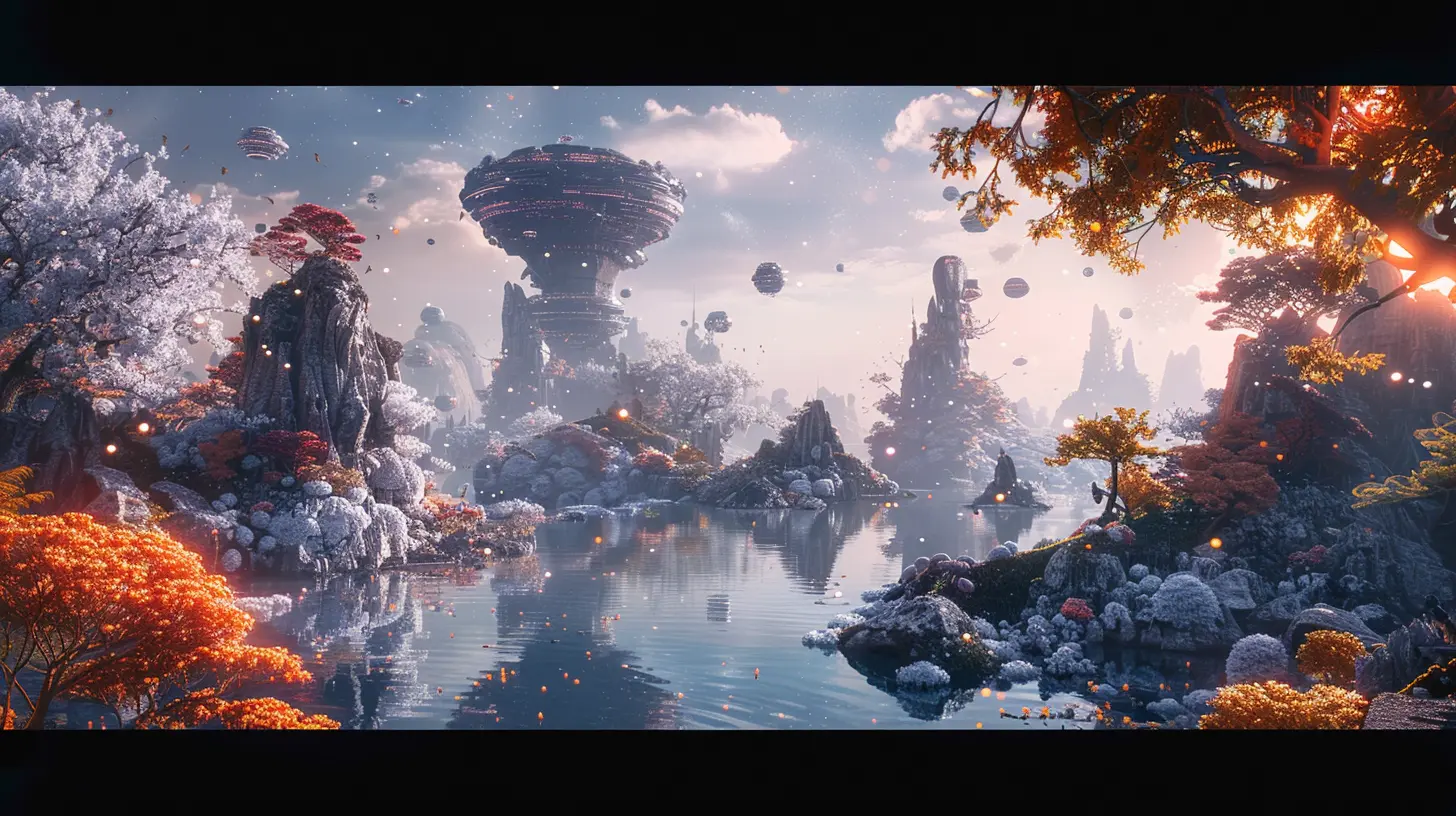
Where Did Procedural Generation Begin?
Surprisingly, procedural generation isn’t some brand-new sci-fi tech. It’s actually been around since the early days of video games.Back in the '80s, games like Elite used procedural generation just to save space. Why? Because hardware and storage were super limited. Instead of storing huge maps, games used algorithms to create environments on the fly. It was more about necessity than innovation.
Fast forward to today, and we’ve got terabytes of space and hyper-fast GPUs, yet procedural generation is more relevant than ever. Not just to save space, but to create massive, rich, and unpredictable worlds.
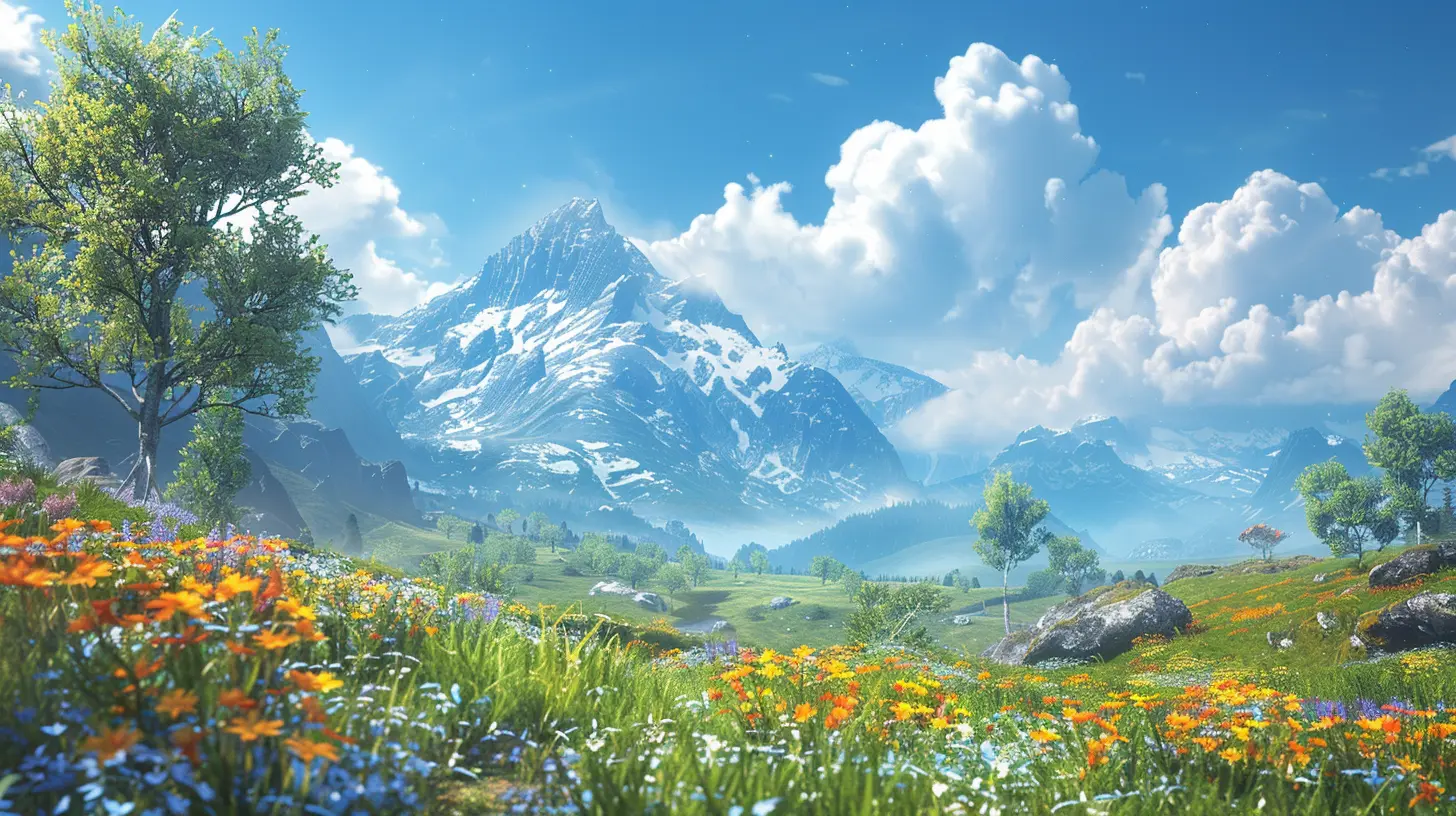
The Big Evolution: From Blocky to Beautiful
Remember those early procedural worlds? Kinda repetitive, right? Same trees, same textures, same old dungeon layouts.Modern procedural generation, however, is a whole different beast. Thanks to AI, machine learning, and sheer computing power, we’re now seeing procedural content that looks incredibly realistic. Mountains with unique erosion patterns, cities with believable architecture, wildlife that behaves naturally — all generated on the fly.
And the cherry on top? It’s scalable. Indie devs can use it to punch way above their weight, and AAA studios can create massive content without spending decades hand-crafting every inch.
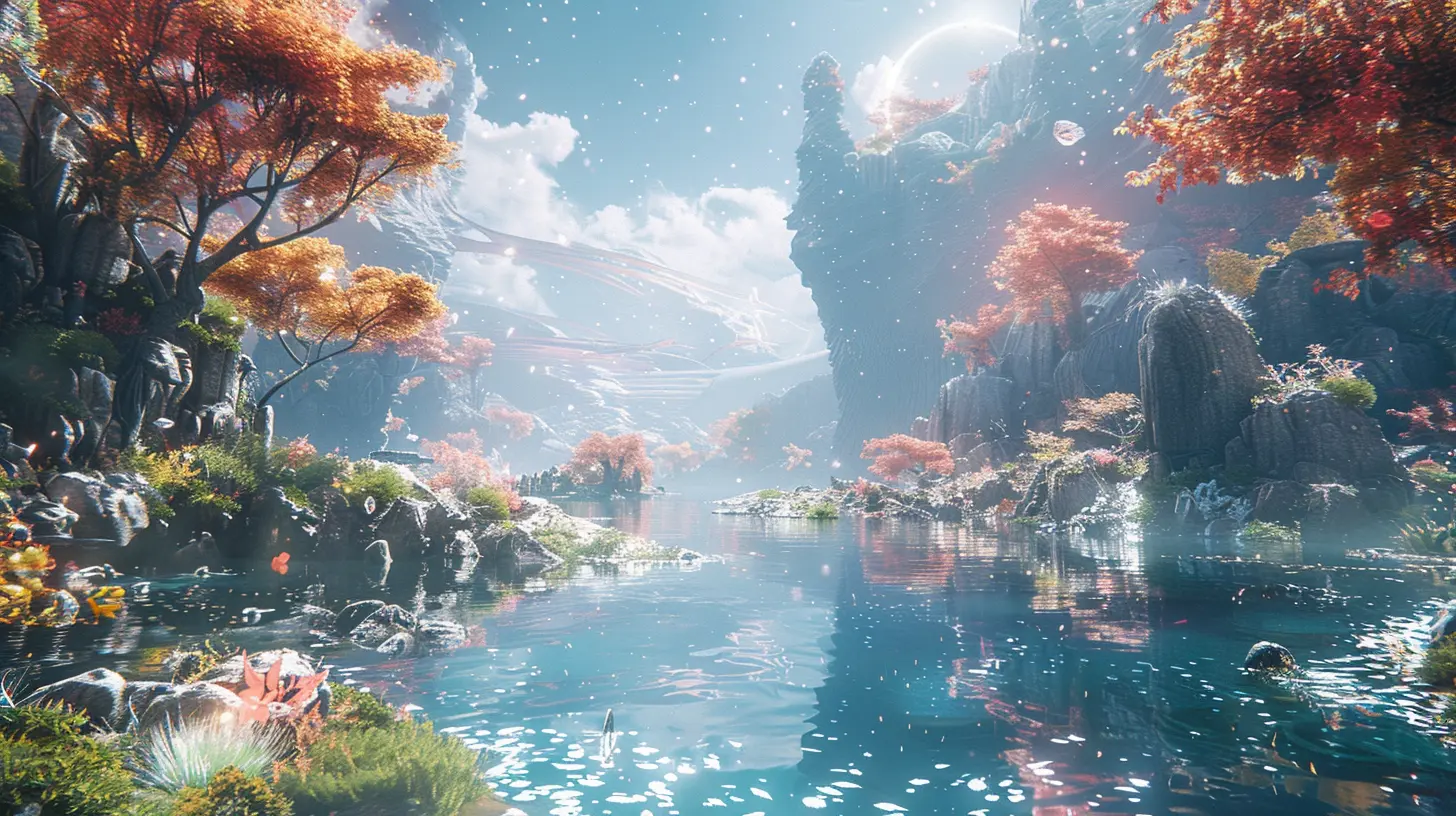
So… How Does This Impact Graphics?
Alright, let’s get to the juicy stuff.1. Hyper-Realistic Worlds
Ever walked through a game and thought, “This place feels… alive”? That’s procedural generation working behind the scenes.When everything from the layout of a forest to the way sunlight filters through the trees is generated dynamically, the world feels less like a static stage and more like a living, breathing ecosystem.
We’re getting to the point where textures, lighting, weather, and even soundscapes can be procedurally generated. That means unique sunsets, randomized rainfall patterns, and shadows that behave like they do in the real world — no cookie-cutter assets here.
2. Infinite Replayability
Gamers love variety, and procedural tech brings it in spades.You can play a procedurally generated dungeon crawler like Hades or Dead Cells over and over again — and never get the same layout twice. It’s like playing shuffle mode, but with game levels.
Graphics-wise, this also means that visual assets are constantly changing. The same building might appear entirely different depending on when and how it's generated. That diversity keeps games visually fresh and exciting.
3. Smarter Asset Creation
Let’s talk about the devs for a sec.Creating high-quality 3D assets is time-consuming and expensive. Procedural tools like Houdini or Blender’s procedural shaders can generate insane levels of detail with just a few input rules. That frees up artists to focus more on art direction and less on grunt work.
Plus, it opens up possibilities for smaller teams to create AAA-style worlds without the AAA budget. More artistic freedom, fewer sleepless nights.
4. Real-Time Adaptation
Here’s a cool twist — procedural generation isn’t just used before the game launches. It can also run during gameplay.Let’s say you’re playing a survival game, and your choices dynamically affect your environment. Cut down too many trees? The ecosystem changes. Overhunt animals? Predators evolve or migrate. With procedural logic baked into the graphics pipeline, the world responds to you visually. It’s not just reactive — it's alive.
Procedural Graphics in VR and AR
Now, let’s throw virtual and augmented reality into the mix.In VR, immersion is key. Everything has to feel real, from the way the grass moves to how shadows change with your head movement. Procedural generation helps fill out these environments without taxing the hardware too much.
Same goes for AR. If your AR game shows a fantasy dragon landing in your neighborhood, procedural generation means it can adapt how that dragon looks depending on your real-world surroundings. Super cool, right?
Procedural Generation Meets AI – The Power Couple
AI and procedural generation are like peanut butter and jelly — better together.AI can learn what kinds of visuals players respond to, what level designs keep them engaged, and even what lighting setups feel most immersive. Feed that into a procedural system, and boom — you get smart generation. Environments that aren’t just randomized, but personalized.
Machine learning also helps procedural tools generate textures and models that pass as hand-crafted. It’s like giving the algorithm an art degree.
Challenges Ahead (Yep, It’s Not All Sunshine)
Procedural generation isn’t perfect. As awesome as it is, there are a few hurdles we’ve gotta jump over.1. Repetition
If the rules behind generation aren’t diverse enough, patterns emerge. You start noticing that every fifth tree looks oddly… familiar. That breaks immersion pretty fast. Developers need to constantly update and diversify their input rules.2. Loss of Artistic Intent
Procedural generation can go wild — sometimes a bit too wild. You might end up with worlds that don’t align with the story or theme. Striking the balance between randomness and design is tricky.3. Performance Demands
Real-time procedural generation can be CPU and GPU intensive. And not every gamer is rocking a beastly PC or next-gen console. Optimization continues to be a major concern.Still, these challenges are being tackled head-on by the community and tech developers alike.
What Does the Future Look Like?
The future of procedural generation looks ridiculously exciting. Here’s a glimpse of what we could see in the next few years:- AI-directed procedural art: Artists will guide algorithms more like directors than creators. Think of it as painting with code.
- Personalized visual styles: Games could alter their art style based on your taste. Prefer cyberpunk aesthetics? The engine adapts.
- Fully dynamic open worlds: No pre-built maps. Every mountain, city, and forest generated on demand, reacting to the player’s actions.
- Procedural cinematography: In-game cutscenes composed in real-time, considering lighting, camera angles, and even character emotions.
We’re only scratching the surface. Pair procedural generation with cloud computing, neural rendering, and real-time ray tracing, and suddenly the line between video games and reality starts to blur.
Final Thoughts
Procedural generation is no longer just a tool — it’s a revolution in how we build, see, and experience digital worlds. As technology improves, game graphics won’t just become more realistic — they’ll become more dynamic, more personalized, and more immersive than ever before.For gamers, that means infinite possibilities. For developers, it means breaking free from traditional limitations. And for all of us? It means the future of gaming is looking mind-blowingly bright.
Whether you’re wandering a procedurally generated desert or exploring a cave system that no one has ever seen before (literally), one thing's for sure — this is just the beginning.
all images in this post were generated using AI tools
Category:
Video Game GraphicsAuthor:

Avril McDowney
Discussion
rate this article
2 comments
Spike Hall
Procedural generation is revolutionizing gaming, pushing the boundaries of creativity and technology. It’s not just about graphics; it’s about limitless possibilities and dynamic worlds that adapt to players. Embrace the chaos and innovation—this is the future, and it’s unstoppable!
June 20, 2025 at 4:38 PM

Avril McDowney
Absolutely! Procedural generation is indeed reshaping gaming by creating dynamic, immersive experiences that evolve with player interactions. It's an exciting frontier for creativity and innovation in the industry.
Zevon Sharpe
Procedural generation: the magical kitchen where game developers toss in a pinch of code, a dash of randomness, and hope for a delicious world! If only my cooking skills could generate a perfect dinner like that. Here’s to the future of graphics—may they look better than my last home-cooked meal!
June 19, 2025 at 2:46 PM

Avril McDowney
Thank you for the creative analogy! Here’s to hoping both procedural generation and our cooking skills continue to improve—whether in games or the kitchen!
